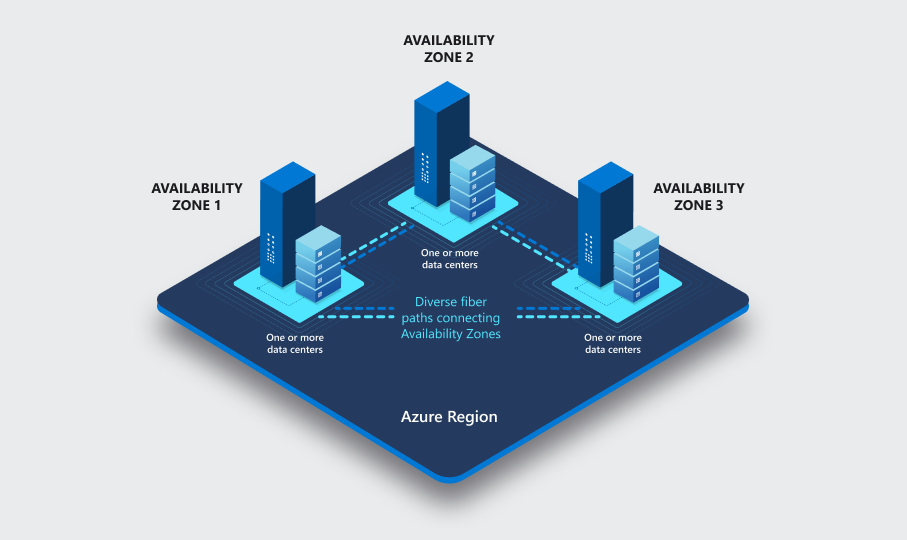Hello, @Fakri SLIMANE !
Let's go over availability sets and availability zones, as well as LRS and ZRS storage redundancy. First, some references from the documentation:
- Availability Sets
- Availability Zones (and Regions)
- Locally-Redundant Storage (LRS) and Zone-Redundant Storage (ZRS)
Availability Sets and Availability Zones
An availability set is a small, relatively local group of redundancy and reliability that protects you from things like power loss to a server rack or updates that you might encounter in a single fault domain. You get a 99.95% SLA when you have an availability set with 2 or more VMs.
An availability zone is a physically separate location (like a datacenter) within an Azure Region that provides redundancy and reliability that protects you from a disaster like a flood that might impact the whole datacenter.

Locally-Redundant Storage (LRS) and Zone-Redundant Storage (ZRS)
LRS copies your data synchronously three times within a physical location and is the least expensive option. This is not recommended for applications that require high availability or durability as there is a localized point of failure.
ZRS copies your data synchronously three times across three Azure availability zones in the primary region. For applications that require high availability, the recommendation is to use ZRS in the primary region and replicate to a secondary region for extra availability.
Specific Answers
- What's the advantage of 3 VMs in ZRS? It gives you 99.9999999999% (12 9's) availability over a given year instead of the 11 9's you get with LRS, protects you from disasters that may impact an entire zone (but not an entire region where multiple zones are affected which is why geo-zone-redundant-storage or GZRS is offered).
- Are the LRS SSDs in a single fault domain? No. Each virtual machine in your availability set is assigned an update domain and a fault domain. Each availability set can be configured with up to three fault domains and twenty update domains.
- Is it better to use LRS or ZRS? This depends. You get more availability with ZRS but it also costs a bit more so you will have to determine what is best for your needs.